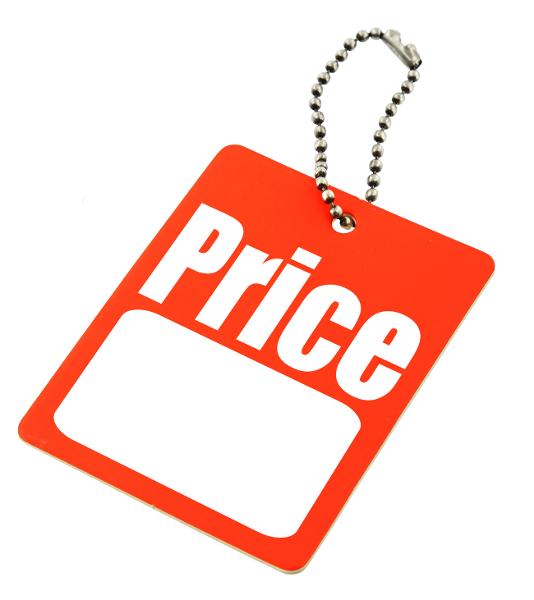Pricing is a very delicate issue in any business organization thus the need to develop a penetration pricing policy. Pricing determines the level of profitability of any business entity. The decision regarding prices is not just made rashly but must be carefully made. Prices are set putting various factors into consideration.
Some of those factors would include; Cost of production, overall operating cost, economic policies, and market forces. Sometimes prices are set based on circumstances, by this we mean, it could be a promotional tool to increase sales, an incentive to loyal customers, or as a means of gaining market share for a new product. Sometimes prices are set to either increase or reduce stock movement, or as a way of reducing the consumption of certain harmful products or foreign-made goods.
What Is Penetration Pricing?
Businesses use penetration pricing as a marketing tactic to attract customers to a new product or service by offering a lower price during its initial release. A reduced price assists a new product or service in breaking into the market and luring customers away from competitors. The approach of employing cheap prices to make a large number of buyers aware of a new product is known as market penetration pricing.
A price penetration strategy’s purpose is to encourage customers to try a new product and grow market share, with the hope of keeping the new customers after prices return to normal. An online news website that offers one month free for a subscription-based service or a bank that offers a free checking account for six months is both instances of penetration pricing.
Understanding Penetration Pricing
When used appropriately, penetration pricing, like loss-leader pricing, can be a successful marketing approach. It can frequently enhance market share as well as sales volume. Furthermore, larger sales might result in cheaper production costs and faster inventory turnover. The key to a successful campaign, though, is to keep the newly acquired clients.
To lure clients to a store or website, a corporation might run a buy-one-get-one-free (BOGO) campaign. After a transaction has been made, an email or contact list should be generated to follow up with the new consumers and offer further items or services at a later period.
Customers may first choose the brand because of the low price if it is part of an introduction campaign, but as the price rises to or near the price levels of the competing brand, they may switch back to the competitor.
As a result, one of the biggest drawbacks of a market penetration pricing plan is that an increase in sales volume may not result in an increase in profits if prices must remain low to retain new consumers. If the competition lowers its pricing as well, the companies may find themselves in a price war, resulting in lower prices and profits for a long time.
Pricing is a very strong tool in business and as such should be used appropriately. We are going to talk about one of the usefulness of pricing.
How penetration pricing policy can help you gain market share for your new product
This method or pricing policy is usually based on the premise that “A lower price is charged on a product on introduction into the market” with the intention of gaining a reasonable market share for the product and gaining a reasonable level of acceptance for the product. This policy is usually appropriate. When the product has got a close substitute or when there is free entry and exit into the market (open market system). The lower price charged is to discourage potential competitors from producing similar goods. Enable the company to establish a large market share for the product. This can be easily achieved when the product is new and yet to make a statement in the minds of the customers. Then prices can be reviewed upwards after buying habits have been established.
Just like we know, a lot of products have a product life cycle, which consists of four basic stages; the Introductory stage which is the stage where penetration pricing policy is most appropriate and strongly advised, the growth stage, the maturity stage, and the decline stage. After charging a price that will attract and entice the customer at the introductory stage where the product is still fighting for awareness and acceptance. The product then gains ground and moves to the growth stage, because of introductory promotions and greater customer awareness. It is also advised that in the introductory stages. It will be appropriate to shade the price upwards or downwards with normal analysis to create favorable demand.
Overview
in future years. At the maturity stage, a firm will be less concerned about the future effects of the current selling prices. Should adopt a selling price that maximizes short-run profits.
Basically, the essence of this penetration pricing policy is to provide a watered ground for the introduction of a new product to gain the needed growth. A substantial amount of the market share. This pricing policy should not be used beyond the introductory stage of the product life cycle. Because as the product continues to dominate the market, there will be a need to adequately maximize profit. So continuing with that price might affect the profit maximization goal.
Which Businesses Employ a Penetration Pricing Strategy?
The promotions for introductory low prices for select fresh items that you frequently notice when you enter a supermarket are the ideal instances of penetration pricing. In order to boost demand for the organic goods they sell, Costco and Kroger use penetration pricing.
What Is Another Name for Penetration Pricing?
When used to its utmost, penetration pricing is also referred to as predatory pricing when a business sells a good or service for an unreasonably low price in order to drive out competitors and create a monopoly.
How Are Penetration Prices Calculated?
When companies launch a low price for a brand-new good or service, this is known as penetration pricing. Competitors are compelled to match the offer or immediately implement alternative techniques since the first price undercuts it. Customers of competitors may move to the less expensive offer, and new customers may also sign up.
What Is a Strategy for Penetration?
The idea of a penetration strategy is to work aggressively to significantly increase one’s share of total sales in a market. A business may often make things or purchase goods at a reduced cost as a result of the increasing sales volume, which allows it to raise its profit margin.
What Does the Term “Penetration” Mean?
Entering or passing through anything is referred to as penetration. It offers a profound understanding. Penetration is an example of this since it involves something passing through something else. You may discuss an army infiltrating a citadel or a dagger slicing through a garment.
A QUICK NOTE
Some products might not necessarily need this type of pricing policy, so as an entrepreneur, manager, or cost account accountant. You should understand your business and the market you are operating in. Some new products are rather introduced at a high price. Then as it goes through the product life cycle the price begins to drop. Also, some of these products could include cars, mobile devices, and some luxury items. And in terms of services, customer behaviors should be studied when making a decision about fixing prices. Some services would be term poor if low prices are fixed on them while setting high prices for some services. Will be seen as being overpriced.
FAQs
What is skimming and penetration pricing?
To maximize short-term profits, price skimming raises prices to attract clients who are most interested in the product or service.
What is an example of market penetration?
For example, if a country has 300 million inhabitants and 65 million of them own mobile phones, the cell phone market penetration rate is around 22%.
What is an example of price skimming?
When it comes to new technologies, price skimming is commonly used. An excellent illustration of this is DVD players. DVD players may cost up to $1,000 when they first came out in the late 1990s.






